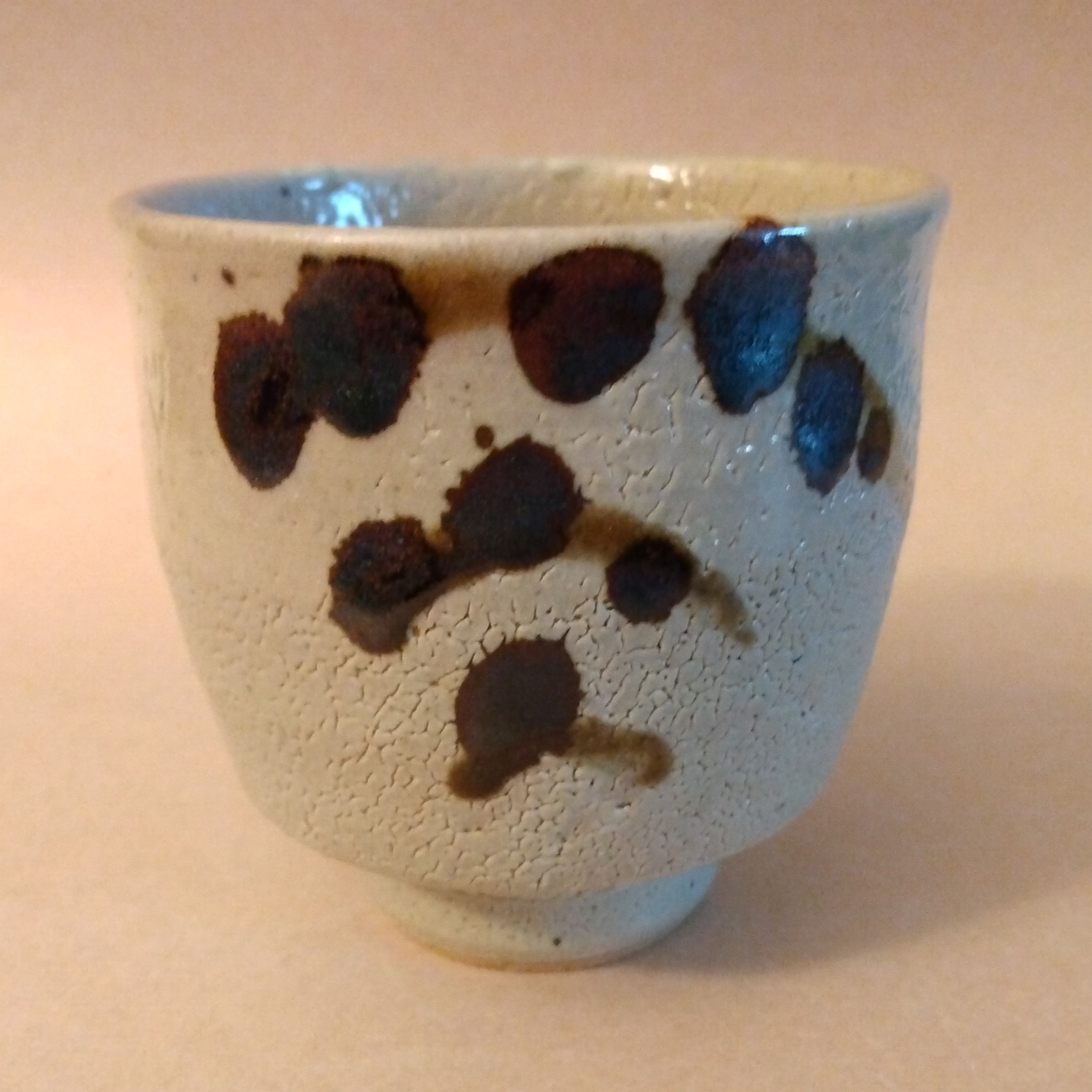Description
Yunomi, Tea Cup, by Hamada Shinsaku, 1929-2023, of Mashiko, vintage, ca. 1990, with signed wooden box. Nuka (rice husk ash) glaze with bands of iron brushwork in a possible branches & flowers motif. H. 3.25" (8.25cm) x Dia. 3.25"(8.25cm). Weight 190 grams. Volume 220ml (7.25oz).
Hamada Shinsaku was born in 1929, in Tokyo, as the second son of Hamada Shoji, one of Japan's most internationally famous potters of the 20th Century. In 1930, his family moved to to the folk pottery town of Mashiko, where his father had chosen to establish his own pottery. Shinsaku returned to Tokyo for university studies in Industrial Art at Waseda University. After graduation, he went back to Mashiko and assisted his father in his pottery work, demonstrations, and lectures. He did not start exhibiting work on his own until 1970, shortly before his father's passing in 1978. He has since exhibited and has had his work collected widely in Japan, the U.S., in Europe, China, Korea, and around the world. His passing last year (2023) was a great loss to the Mashiko community, and to the pottery community at large. He was still making pots daily into his late 80's.
Hamada Shinsaku's work is quiet and understated, but rooted in strong form and technique. His decoration is often a simple brushstroke in iron or occasionally red enamel (aka-e). At first glance, it may appear simple, but his pots stand the test of time as well as any in recent Mashiko history. They exhibit the quiet beauty of Mingei (folk craft) and, in my humble opinion, it could be said that they attain Buddhahood in just sitting on the table.
The town of Mashiko is located about 70 miles northwest of Tokyo, in Tochigi Prefecture. Although there is evidence of pottery manufacture in the region of Mashiko as far back as the 8th century; production in the modern age began in 1853, making it a relatively young pottery center by Japanese standards. However, whereas many traditional pottery towns disappeared when Japanese lifestyle changes made many functional clay items obsolete, Mashiko has survived and thrived as one of the largest pottery communities in the world. Much of this can be credited to life and work of Shoji Hamada, who decided to settle in this traditional clay village. Although he was a contemporary artist, he showed great respect for the work of traditional artisans, for the natural materials available from the region, and for the "Other Power" of tradition. He was a leading figure in the Japanese Folk Craft Movement, along with Soetsu Yanagi and others; such as potters Bernard Leach and Kanjiro Kawai, textile artist Keisuke Serizawa, and woodblock printer Shiko Munakata. Hamada was designated as a National Living Treasure for his preservation of Mingei (Folk Craftâ) pottery and promoted an openness which led many to follow his path to Mashiko. In the early 2000's, there are some 400 kilns operating in and around Mashiko making a wide variety of wares; from traditional styles and patterns to modern artistic works.







